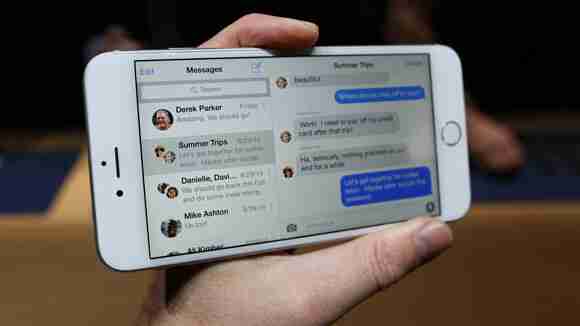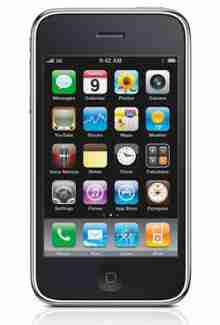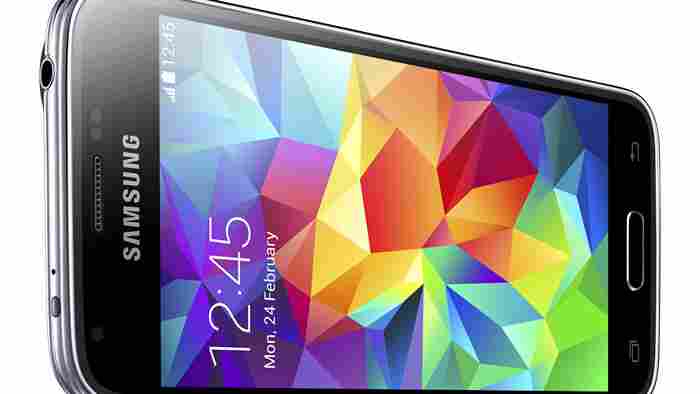If you’ve ever had to deliver an online presentation, do a product review, or even hold up your end of a long-distance conversation with business associates or family members, you know that commanding and maintaining attention is a challenge. And if you’re not a drama school grad, trying to remember your lines with a camera pointing at you is brutal.

To alleviate that pain, iTOi (pronounced ‘eye to eye’) has launched a new hardware-software combo for the iPad that optimizes your presentation by combining a glare-free Video Booth accessory with a software teleprompter so you never forget what to say.
The Video Booth hardware facilitates all-important eye contact with the iPad’s camera via a series of optical grade lenses. These act to adjust the position of the speaker’s face so that they look directly into the camera at the person they’re talking to.
Video Booth is compatible with popular video chat software that offers full-screen iPad viewing, such as Skype, FaceTime, Google Hangouts and others. The device also features high-quality sound capture and projection and a p rotective canopy that eliminates glare and unwanted ambient light as you record and converse.
Combined with iTOi Producer , the free iPad companion app, you can write or import a script, add photos from Facebook or the iPad Camera Roll or Photos app, record a video, and use the iTOi cloud library to store and share the videos you create. When you’re ready to get started, just place the iPad into the Video Booth.
The app lets users adjust fonts and font sizes and check the estimated run time of their video based on the script. You can pull images into the presentation and set the location and duration of their visibility.
The iTOi cloud library stores and hosts completed videos for sharing and embedding across the Web and via social networks.
Video Booth is now available for order online via Brookstone for $149, starting today and will be available for purchase at Brookstone retail stores in early November. The iTOi Producer companion app is available now on the App Store.
➤ iTOi
Apple’s supersized iPhones could leave people with small hands and pockets behind
Well Apple has gone and done what the world seems to have wanted it to do: make a big ‘ol iPhone — or two. But I’m sort of bummed. I highly doubt that I’m the only person on the planet who was not clamoring for a larger iPhone, though I’m sure that’s a minority viewpoint.

When the iPhone 5 came out two years ago — just in time for me to upgrade from my aging but beloved 3Gs — I was psyched. The iPhone 5, at four inches, was a tad bigger than the 3.5-inch 3Gs, and the whole package sounded great in theory. The larger screen fit in well with the camera improvements for shooting and viewing video. But once I got it in my hands, I found it unexpectedly hard to get used to.
An admission here: I have small hands, and maybe that’s part of it. The 3Gs fit so naturally in my diminutive paw, and was so comfy to use everywhere (think train ride, lying on the couch), because I was able to get a firm grip around its body with one hand. When I held the delicate little block up to my ear for one of my rare phone conversations, I didn’t look like I was holding some kind of slab up to my face.
Getting used to the iPhone 5 took awhile, but eventually I got to the point where I was able to easily handle that device with one hand. It never felt as natural. As it turned out, it was the iPhone 5’s improvements in image quality, screen resolution and camera that proved a lot more compelling than its expanded dimensions. Even after two years, it’s still an awkward fit in some of my shirt and pants pockets.
So now we have something even bigger — a different class of size, in fact. The 5.5-inch iPhone 6 Plus (it sounds like those “plus sizes” at the department store) more closely resembles a phablet, in itself an alien concept for Apple.


Today, and for the first time, I’m not especially looking forward to a new iPhone. I don’t discount the perfectly legitimate argument that the benefits of a larger, though thin handset may outweigh the extra size, such as improvements in battery life, display quality and just seeing more of everything, which will accompany the larger frames.
Plus, Apple has taken small hands into consideration by creating one-hand features in the phones’ software. Display Zoom enlarges the size of content onscreen while Reachability moves content from the top of the screen to the middle for easy reach. That’s in addition to some redesigned and relocated control buttons.
I can’t help thinking, though, if Apple went to the trouble of making two sizes — big and bigger — why not just add a third size to the selection — the one people already like?
Well, both the iPhone 5s and 5c are both still available for purchase, though that also means settling for internal specs that are at least a year old.
Will I wind up buying a new iPhone? It is almost certain that I will — eventually. After all, there’s plenty of kick ass tech to lust after in the new iPhones, apart from, or even because of, their larger sizes. When my old phone needs replacing, I can’t picture myself wanting to deal with the Android OS on a daily basis, and besides, some Android phones are even larger. The Samsung Galaxy Nexus I sometimes test Android apps with is comparable to what now will be the smallest new iPhone, at 4.65 inches.
When I do decide to upgrade my phone, it will obviously be for one of the larger iPhones — there is no other option. And who knows, maybe once I actually get my hands on one, it will completely blow me away. Funny how those things go.
However I wind up feeling, I’ll always love that Apple was able to pull off the original iPhone at its debut size, and had the temerity to stick with smaller phones for so long.
➤ Apple iPhone 6
Also read: The iPhone 5 ad that Apple wants you to forget today
Samsung Galaxy S5 mini and Young 2 headed to the UK from August 7
Samsung has confirmed that the slightly smaller version of its flagship smartphone, the Galaxy S5 mini , will go on sale in the UK from August 7.

The device may be called ‘mini’ but it still offers a solid mid-range spec list, which includes a 4.5-inch 720p HD display, 1.4Ghz quad-core processor, 1.5GB RAM and an 8-megapixel camera on the rear. For comparison, the bigger brother S5 model comes with a 16-megapixel camera, 2GB RAM and a 2.5Ghz quad-core processor. The S5 mini does also offer the same fingerprint scanner and heart rate monitor, though.
The company said the S5 mini would go on sale in the UK from August 7 from “selected online and high street retailers, including Samsung Experience Stores and Carphone Warehouse”. UK pricing still hasn’t been confirmed.
The second handset, the Samsung Young 2, is an altogether more low-end Android affair designed to appeal to more youthful (and therefore, cash-strapped) buyers.
Spec-wise, the Young 2 includes a 1GHz single-core processor, 3-megapixel camera, 3.5-inch HVGA display, the most recent version of Android KitKat (4.4) and Samsung’s updated TouchWiz UI.
Samsung said that the Young 2 would go on sale in the week following the S5 mini, but again, pricing wasn’t revealed.
With declining smartphone sales and close competition in the low-to-mid range from the likes of the Moto E and similar devices, Samsung will need to step up its game if it wants to keep consumers interested.
